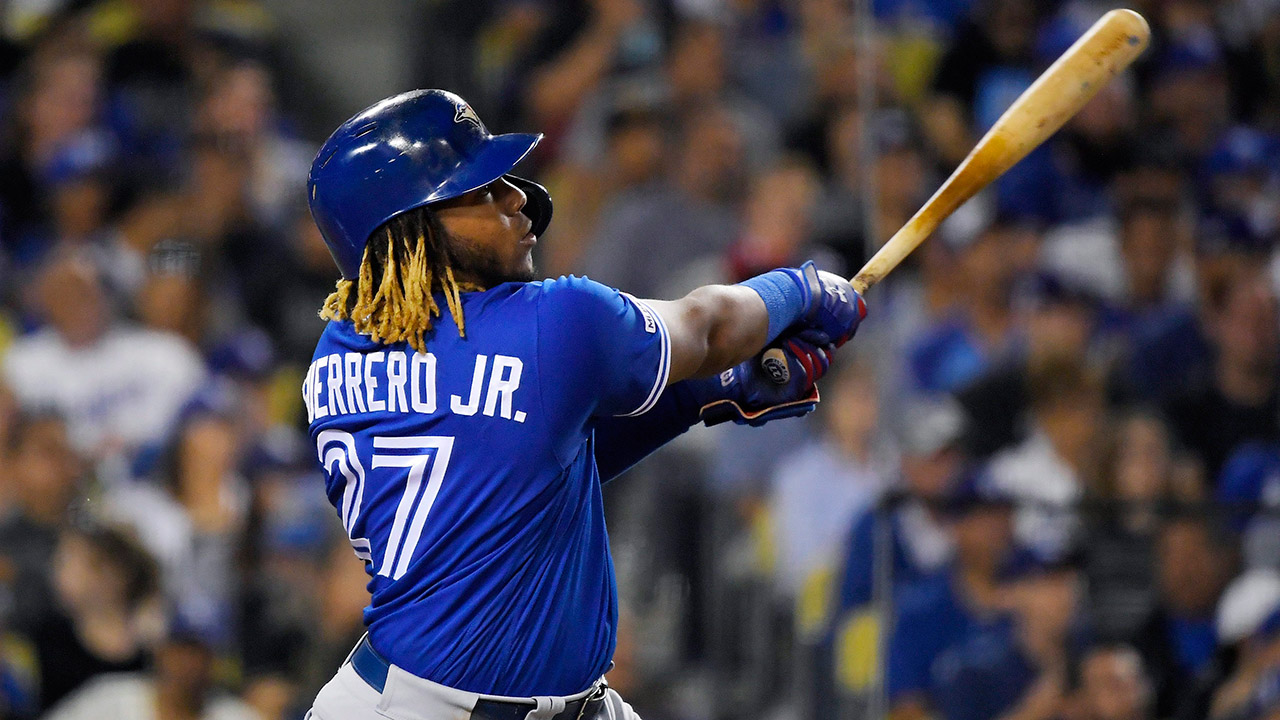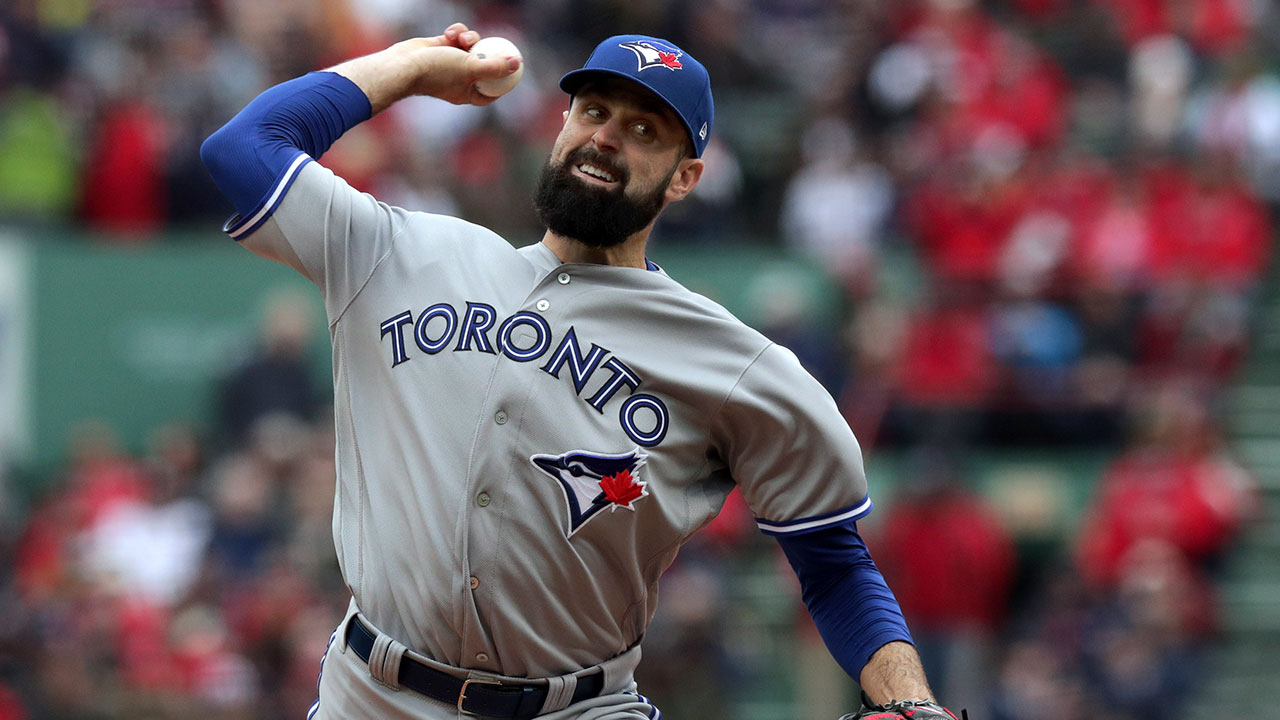The next few weeks will seemingly be quiet for the Toronto Blue Jays. Their players have long since scattered in search of a little rest after after a 95-loss season. And while last October was defined by the club’s managerial search, fewer personnel changes are on the horizon this year.
Relatively speaking, then, this month should be calm, but the next few weeks are nonetheless critical for the Blue Jays front office. With the off-season approaching, this time represents a chance to get a head start on some upcoming decisions.
[snippet id=4722869]
So, once the off-season begins in earnest, what exactly will the Blue Jays do? Or – to approach it from another angle – how do the Blue Jays see themselves? If we can answer that second question, perhaps the front office’s plans will become a little easier to anticipate.
Let’s start with what we know. Last week at the team’s season-ending media availability, GM Ross Atkins said the Blue Jays are prepared to spend more this winter than they have during the preceding two off-seasons. That might mean $60-70 million in total spend, with much of that directed toward 2020. Pitching will be their priority.
That’s still pretty abstract, though. For a little more precision on where the Blue Jays stand, I turned to Dan Szymborski, the founder of the widely respected ZiPS projection systems that are a reference point for executives league-wide. While the official 2020 numbers aren’t out yet, Szymborski, now a FanGraphs senior writer, shared some preliminary projections with Sportsnet.
In some cases the Blue Jays’ internal forecasting would of course differ from these numbers, but this gets us far closer than back-of-the-envelope guesswork. Collectively, the projections have the potential to hint at the Blue Jays’ next steps.
[relatedlinks]
Big picture, how do the Blue Jays look?
The projections are kind to Toronto’s position players, but does that pitching staff ever look vulnerable. Let’s start with the hitters.

The early ZiPS model projects a post-hype breakout for Vladimir Guerrero Jr. (.291 average, .910 OPS, 31 homers) with an equally strong 3.7 WAR season from Bo Bichette. Elsewhere, Cavan Biggio and Lourdes Gurriel Jr. give the Blue Jays two more players who project to generate 2.0-plus WAR.
That’s a solid starting point, but the pitching staff looks far weaker.

It’s probably telling that a minor leaguer leads the way here. Now Nate Pearson’s not just any minor-leaguer, and Baseball America’s No. 7 prospect could debut at some point next spring, but his presence atop this list explains why the Blue Jays will focus on adding more pitching this winter.
So how might this roster do?
In theory, a team consisting entirely of replacement-level players would win 48 games. These projections forecast 17.9 WAR from the position players and 9.2 from the pitchers. As such, the Blue Jays could theoretically expect to win 75 games without making any major additions (48 +17.9 + 9.2 = 75.1).
The performances of young players are notoriously hard to predict, so there’s all kinds of volatility here. This group could easily fall short of that projection or exceed it. A lot of outcomes are in play here.
Compared to this year’s 67-win total, a 75-win season would be eight-win improvement. But, of course, every American League playoff team had at least 96 wins in 2019. There’s still a long way to go.
What about accelerating the timeline?

Back in August, team president Mark Shapiro was asked about the Blue Jays’ willingness to sign elite players in free agency. At the time, he explained that the Blue Jays would be more likely to spend big once they already have a winning roster in place.
“All wins aren’t created equal, right,” Shapiro said. “So a player who’s a three-win player who takes you from 82 to 85 wins probably doesn’t move that needle. But if you’re at 87 wins and it takes you from 87 to 90, does that make sense? So it’s more like when we’re at that point, when we have and you can get the player who helps take you from a good team to a team that’s a potential championship team, we need to go out and get that player, and that (ownership) support will be there.”
Two months later, they project at 75 wins. Put bluntly, the wins they buy on the free agent market this winter are objectively unlikely to push them over the edge. Under these circumstances, there’s clearly a case for staying patient.
(In the context of the league, a bigger issue emerges since so many clubs are approaching free agency similarly. Even if it’s rational for teams to bide their time and build from the ground up, this is the entertainment business. Fans in all 30 markets deserve to see competitive teams even as development happens beneath the surface. Furthermore, the once-entertaining hot stove season has become increasingly bitter because of some large-scale problems that can’t be ignored.)
Regardless, even in the hypothetical world where the Blue Jays outbid everyone on Gerrit Cole, they’re still not close to the 2020 Yankees and Rays on paper. So why push so many chips in now when you can strike with more precision a little later? As long as that investment does eventually come and this isn’t just a delay tactic designed to drive down costs and expectations, there’s strategic value in patience.
When Shapiro addressed reporters last week, he didn’t sound like someone about to rush into a big signing.
“Looking at other teams, even in recent history, San Diego, Philadelphia, that added big-name free agents, it’s kind of thinking about ‘Are we looking to win the off-season, or are we looking to take the next leap for this team,’” he said. “We want to take that next step, moving from competing to winning.”
OK, what does that next step look like?

Generally speaking, it’s far easier to improve on a weakness than a strength, and that makes improving the Blue Jays’ rotation an easy call.
Let’s assume Matt Shoemaker’s ACL continues healing and the Blue Jays bring him back in some capacity. With Clay Buchholz soon to become a free agent, there’s next to no established pitching on the starting staff. From a developmental standpoint, those veterans can help ease the transition to the majors for the Blue Jays’ young arms. More to the point, the right acquisitions could make this club far more respectable in 2020.
There’s room for at least two more established arms, and there’s no risk of stifling your young arms since injuries will eventually create chances for the most deserving arms. Plus, you have flexibility at a time that Ryan Borucki, Jacob Waguespack, Anthony Kay, T.J. Zeuch and Trent Thornton all have options remaining.
Last year, Mike Minor, Charlie Morton and Lance Lynn all signed modest two- and three-year deals that proved incredibly successful. Four years ago, the Blue Jays had similar success with Marco Estrada and J.A. Happ. That’s the kind of deal they need to aim for this winter.
If the Blue Jays can replicate a signing like that, great. At the very least this is a chance to raise the floor by exchanging replacement level arms like Edwin Jackson with league-average pitchers or better.
[snippet id=3305549]
Beyond the pitching…
The projections for Teoscar Hernandez (1.1 WAR) and Rowdy Tellez (0.2 WAR) aren’t definitive. Players beat projections all the time, and the best teams enable those surprise stories.
But clearly the Blue Jays have to look for solutions in centre field and at first base. By the sounds of it, the Blue Jays would like a defensive upgrade over Hernandez in centre and a versatile player capable of playing first base to complement Tellez.
Where would that leave the Blue Jays?
Let’s say the Blue Jays have a solid but unspectacular winter where they add a mid-rotation starter, a back-end starter, some relief help and at least one intriguing position player.
At that point, this team would look deeper than the group that just lost 95 games. But even after some mid-tier additions, the Blue Jays would project as an average team. To do any better than that next year? Well, they’ll have to beat the odds.








